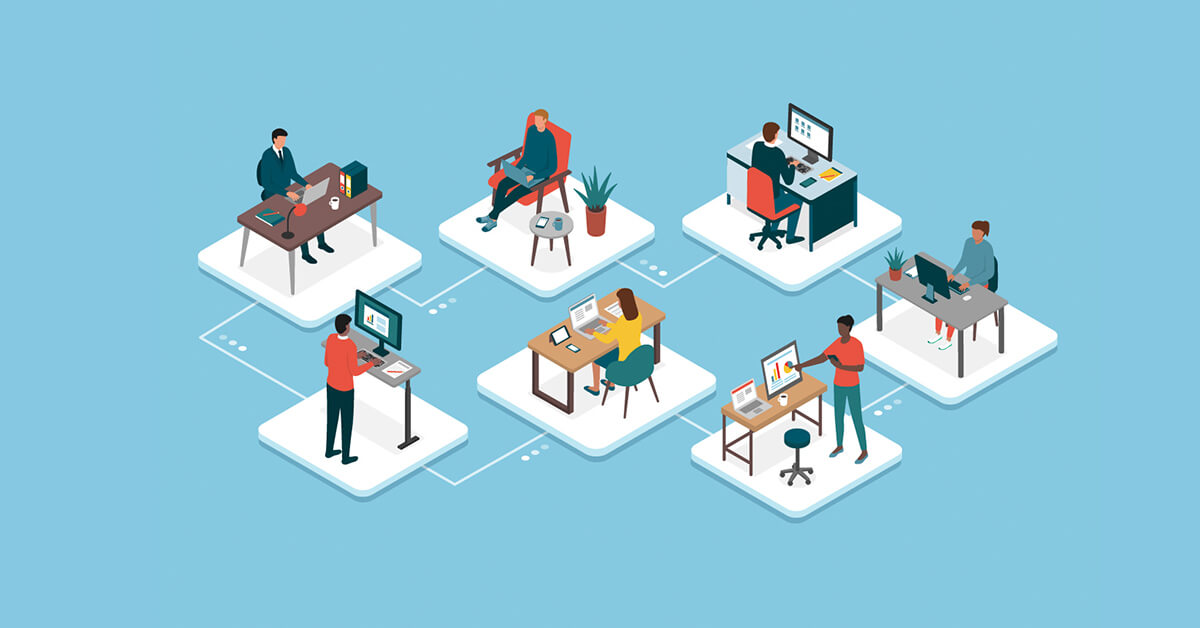We were all amazed at how quickly we moved to virtual work. We waited for the world to fall apart, but it didn’t. On the contrary, many have found they are capable at changing much faster than they ever imagined. However, the longer term impacts could be less positive, particularly when it comes to innovation. Some firms are now expressing concerns that projects are taking longer and innovation may suffer if remote working continues for a longer period. Nicholas Bloom, Stanford economist, predicts that the shift to remote working will lead to a drop in the number of patents, copyrights, and major product launches.
History has proven that innovation is crucial to the long term success of a firm. Gartner’s analysis of the 2008 Great Recession revealed that thirty F1000 companies that had sustained growth through 2017 had all invested in new growth options instead of just cutting costs. Innovation improves a firm’s resiliency to major disruptions. So, how can firms continue to innovate when the traditional work environment will not return for a while, if ever? How can teams ideate, incubate, and scale when they are not working together in a face-to-face environment?
The first step is to assess your innovation practices and identify improvement areas. Every firm has unique circumstances from the type of work, collaboration experience of teams, effectiveness of innovation process (pre-pandemic and during pandemic), and remote collaboration tools proficiency. The next step is to reinvigorate your innovation practices considering the needs of your new working model, whether employees are working remotely or using a hybrid model of work-at-office and remote.
Leaders should still set the ambition and then have teams ideate, incubate, and scale the most promising solutions. In the new working model, it’s crucial to not assume that just replicating the in-person innovation process to an online version will yield desired results.
As you adapt your innovation practices for your new working model, we recommend the following design attributes to help foster teamwork, collaboration, and serendipity.
1 – Asynchronous Ideation. Leaders continue to define the ambition, challenges, and opportunities. Team members are allowed time to generate ideas which others can respond to and build on leveraging collaboration tools. Another option is to use both internal and external crowdsourcing to generate ideas. In all cases, a moderator should be used to facilitate the dialogue such that the team is prepared to select the best ideas at the online workshop.
2 – Virtual Hang Outs. Use breakout rooms feature in your video conferencing to randomly put together 2 to 4 people to work on an issue. This can generate innovative ideas and may even make connections that might not have happened in the office.
3 – Socially Distant Meet-Ups. Where feasible, small teams can still meet in person to develop ideas while adhering to local social distancing rules. Some firms are having meet-ups in parks, where they can collaborate while getting fresh air. One firm, OpenExchange, rented a house with about 15 bedrooms, so many of its employees could live and work together, while still distancing.
4 – Team Energy. When leaders no longer see team members every day, they may not become aware of changes in team energy and engagement of team members. This may be more so for innovation teams as they likely won’t be providing as frequent updates as operational teams. Leaders should do more check-ins on what’s happening in team members lives than they might have when teams were at the office.
During these difficult times, it’s easy to pay less attention to innovation that may not yield results for another 1 to 3 years. But as history has shown, innovation investments during crises improves growth and resiliency. Adapting your innovation practices to the new working model will help you deliver value from your innovation investments.
Nishi Gupta
